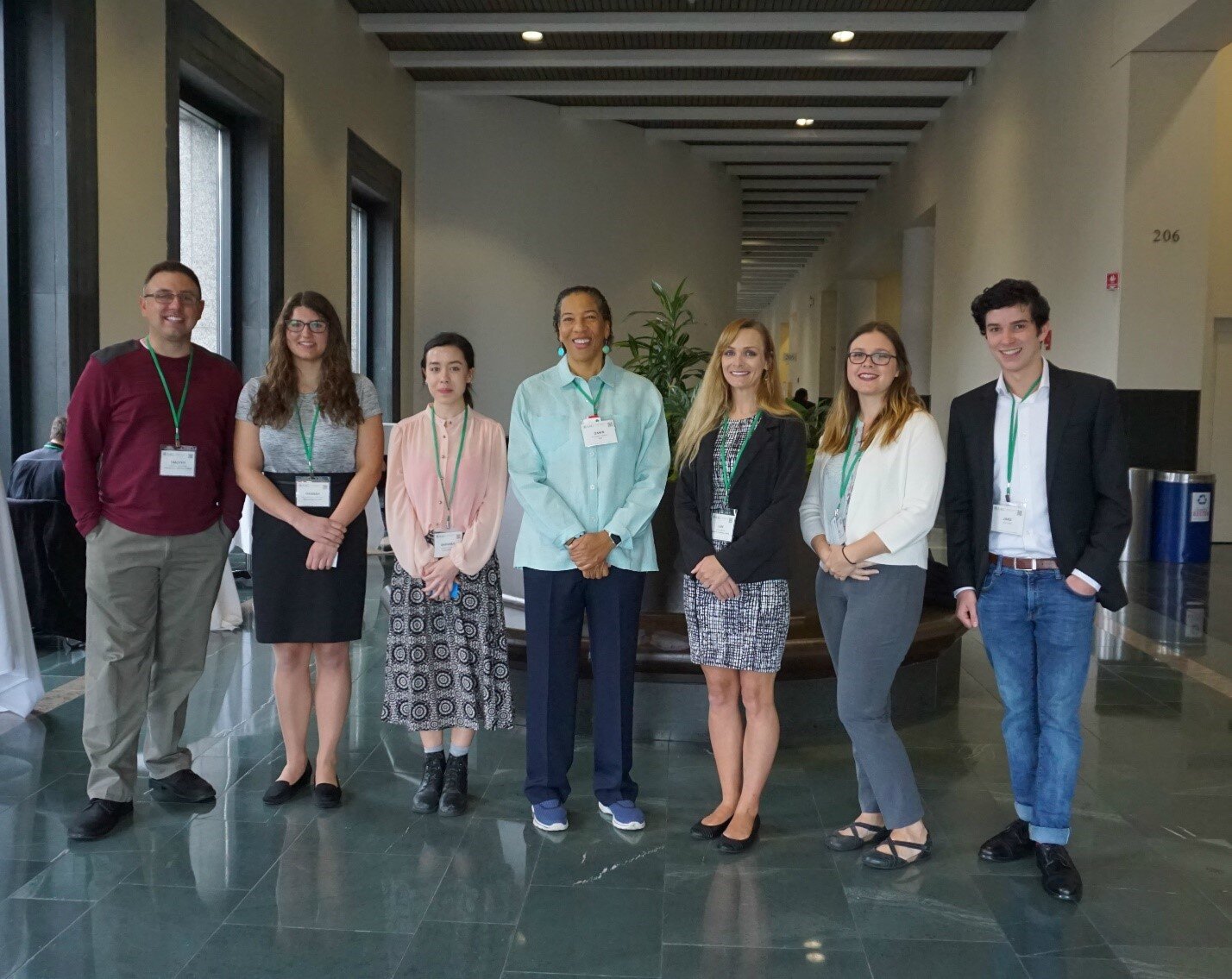Citizen Science GIS NSF REU Site Well-Represented at AAG 2017
As told by Lain Graham, REU Senior Research Coordinator. I was honored to present our citizen science GIS research at the 2017 American Association of Geographers Conference in Boston, Massachusetts last week. I presented a poster entitled, Citizen Science GIS in Practice: Community Based Research in Hopkins, Belize, featured in the Human Geography session as well as the Environmental and Behavioral Specialty Group. This presentation was co-authored by the 2016 REU staff and student scholars. Our poster received an overwhelmingly positive response and generated interest from the audience on the topics of drone mapping, community-based GIS research, flooding and disaster management, marine debris and logistical issues surrounding the data collection, processing and analyses. During the four hour, human geography session I estimate that 100 people viewed the poster, ~45 of which I talked to me at length about our work. The consensus from the poster presentation was that people were surprised that our teams accomplished so much over the course of seven weeks. The second major response from the audience was that people could not believe that this project was started from scratch and built with community input. I am so pleased to have had the opportunity to construct a compilation that summarized our multidisciplinary work. The four-person student marine debris and flooding and disaster management teams pounded the pavement and endured the Caribbean summer heat to collect and analyze community-based data, which we can now share in various forms across the globe. I hope that our emphasis on bottom-up, community-based research resonated with the diverse audience at the 2017 AAG conference. It was my pleasure to showcase both of our research tracks, to display and elaborate on our mission and to encourage others to engage in community-based research projects, because together we can use GIS to address real world problems.
I was honored to present our citizen science GIS research at the 2017 American Association of Geographers Conference in Boston, Massachusetts last week. I presented a poster entitled, Citizen Science GIS in Practice: Community Based Research in Hopkins, Belize, featured in the Human Geography session as well as the Environmental and Behavioral Specialty Group. This presentation was co-authored by the 2016 REU staff and student scholars. Our poster received an overwhelmingly positive response and generated interest from the audience on the topics of drone mapping, community-based GIS research, flooding and disaster management, marine debris and logistical issues surrounding the data collection, processing and analyses. During the four hour, human geography session I estimate that 100 people viewed the poster, ~45 of which I talked to me at length about our work. The consensus from the poster presentation was that people were surprised that our teams accomplished so much over the course of seven weeks. The second major response from the audience was that people could not believe that this project was started from scratch and built with community input. I am so pleased to have had the opportunity to construct a compilation that summarized our multidisciplinary work. The four-person student marine debris and flooding and disaster management teams pounded the pavement and endured the Caribbean summer heat to collect and analyze community-based data, which we can now share in various forms across the globe. I hope that our emphasis on bottom-up, community-based research resonated with the diverse audience at the 2017 AAG conference. It was my pleasure to showcase both of our research tracks, to display and elaborate on our mission and to encourage others to engage in community-based research projects, because together we can use GIS to address real world problems.

